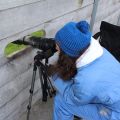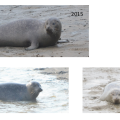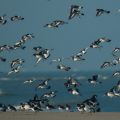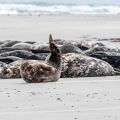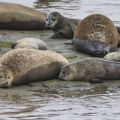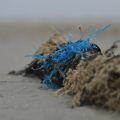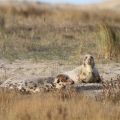Deze site maakt gebruik van cookies, zodat wij je de best mogelijke gebruikerservaring kunnen bieden. Cookie-informatie wordt opgeslagen in je browser en voert functies uit zoals het herkennen wanneer je terugkeert naar onze site en helpt ons team om te begrijpen welke delen van de site je het meest interessant en nuttig vindt.
Field research into behaviour of seals
With the research we conduct in the field, we study and analyse the behaviour of seal mothers and pups in the wild. An example of this is our ongoing research in the Dollard area. On this page you learn everything about studying seals in the wild.
Working with the tides
Met het veldonderzoek is ons team afhankelijk van eb en vloed. Onze onderzoekers zijn vier uur voordat het vloed is aanwezig bij de kijkwand. Met laagwater rusten zeehonden op drooggevallen zandbanken in de zee, maar als het vloed wordt verplaatsen ze zich naar de kust. Tijdens vloed zijn de zeehonden het beste van dichtbij te zien. Drie uur na vloed zijn ze klaar met observeren. Ze bestuderen in deze tijd het gedrag van de zeehonden.
Research equipment
Do you know what all the research team needs? The team carries various materials to make the investigation run smoothly. For example::
- Cameras for the photo identification of seals
- Lenses
- Batteries and SD cards
- Tripods on which the cameras can be placed
- Field notepad and pens
- Tides time table and weather forecast
- A lot of patience
They also take materials that can be useful when a seal needs to be taken care of after observation. The seal is then taken in a large basket. Below are the materials that are needed for a seal rescue:
- Towels
- Scrubs and overals
- Jar, funnel, tubes, water, ORS
- A scale
- Blue spray to mark the pups (in the rest of the province Groningen the colour orange is used)
- Plastic bags for rubbish
- Gloves, masks and blue shoes
Wrap-up observation day
At the end of the day, the team returns to the Sealcentre to officially close the observation day. The collected data are transferred to a hard disk. All important events such as births, marked animals or pickups are written down in the notebook. Lastly, an update is given to the rest of the team.
